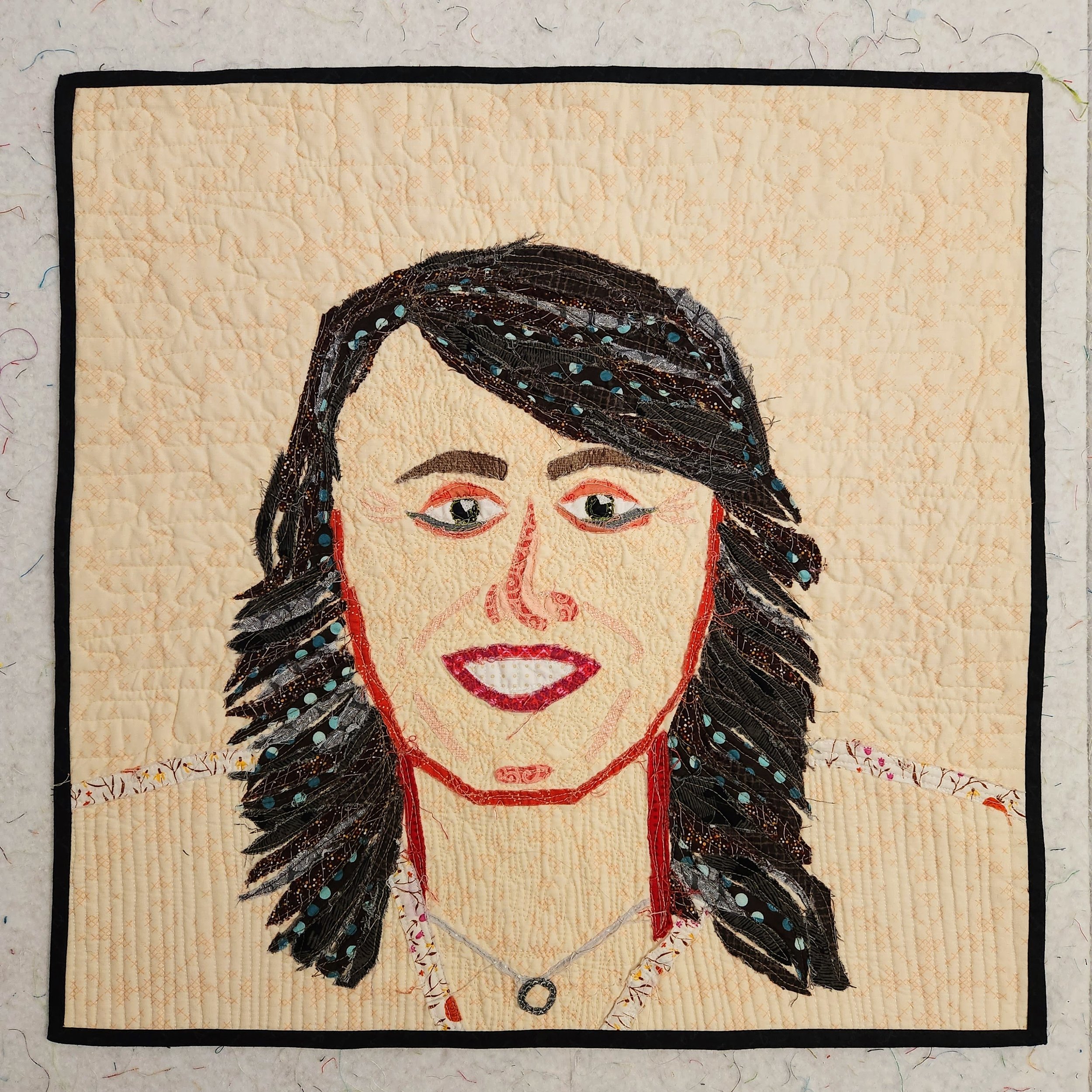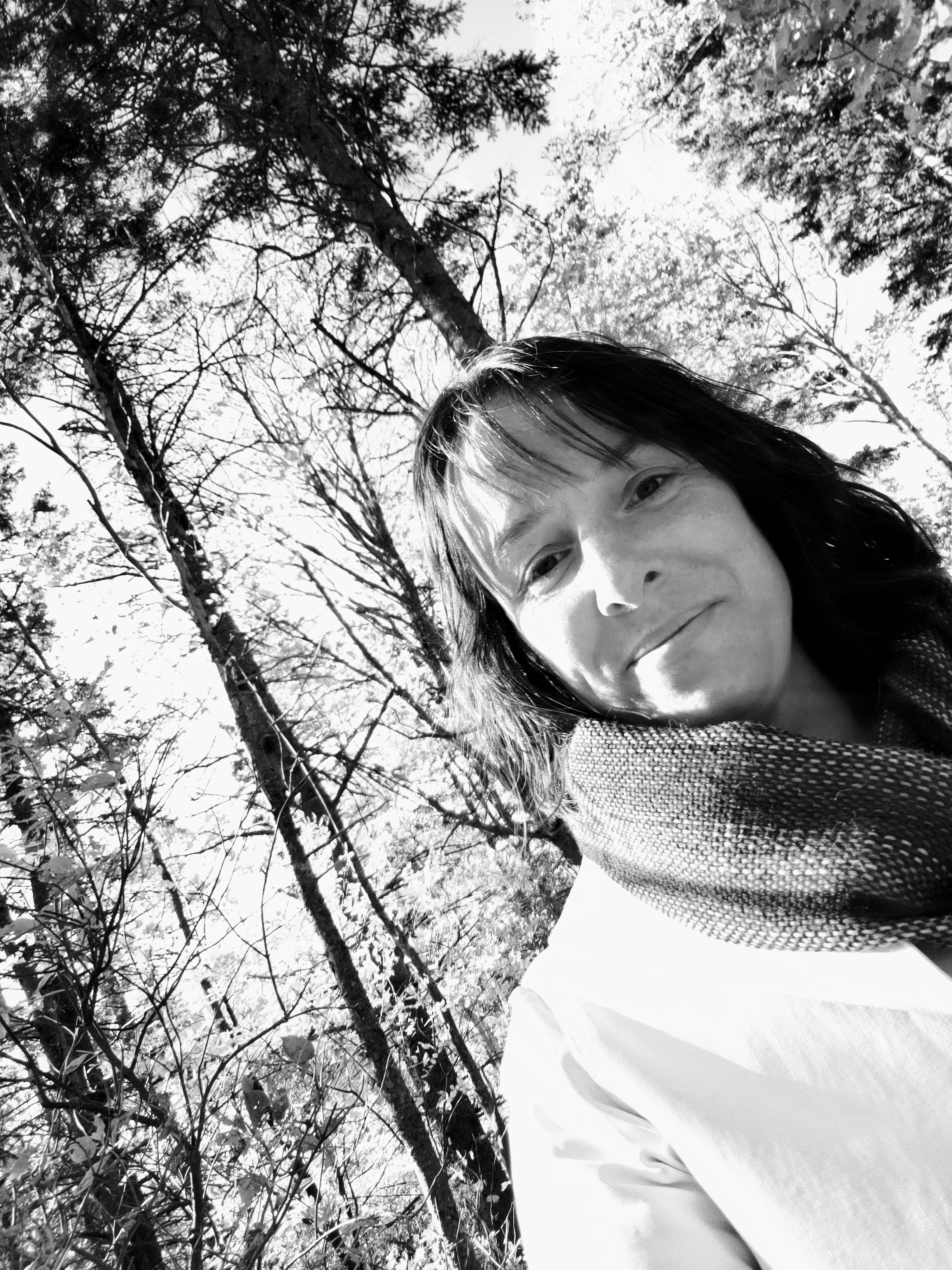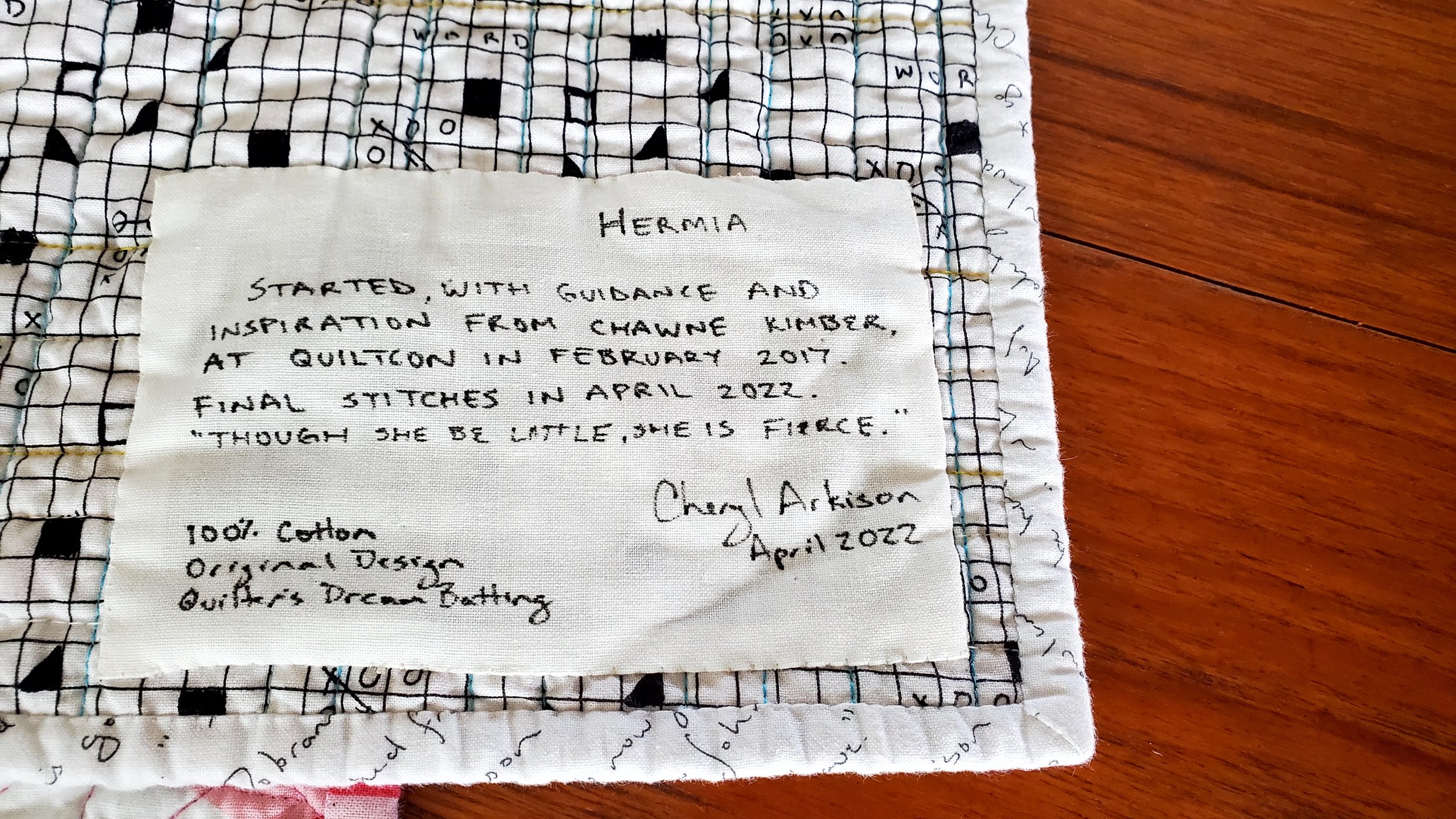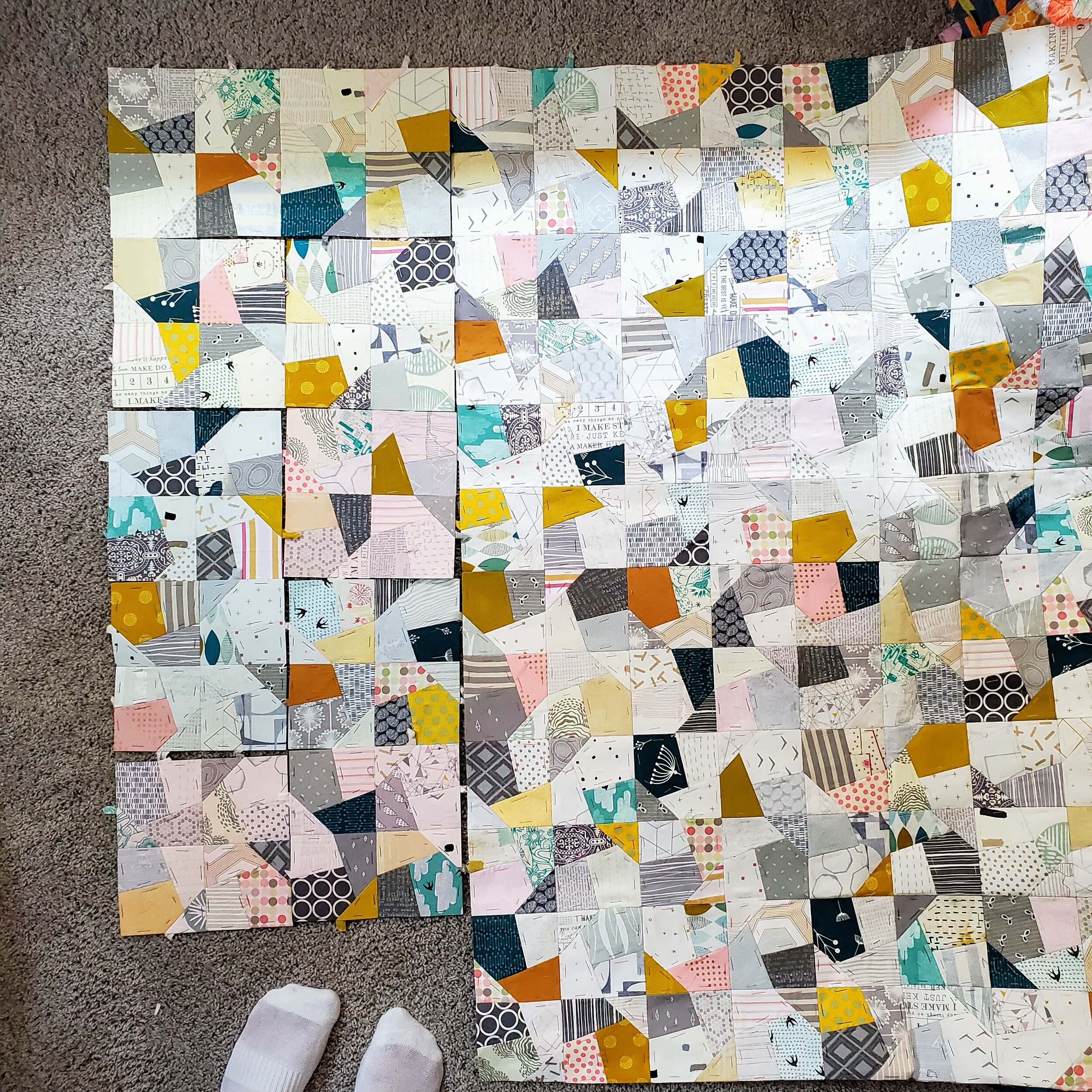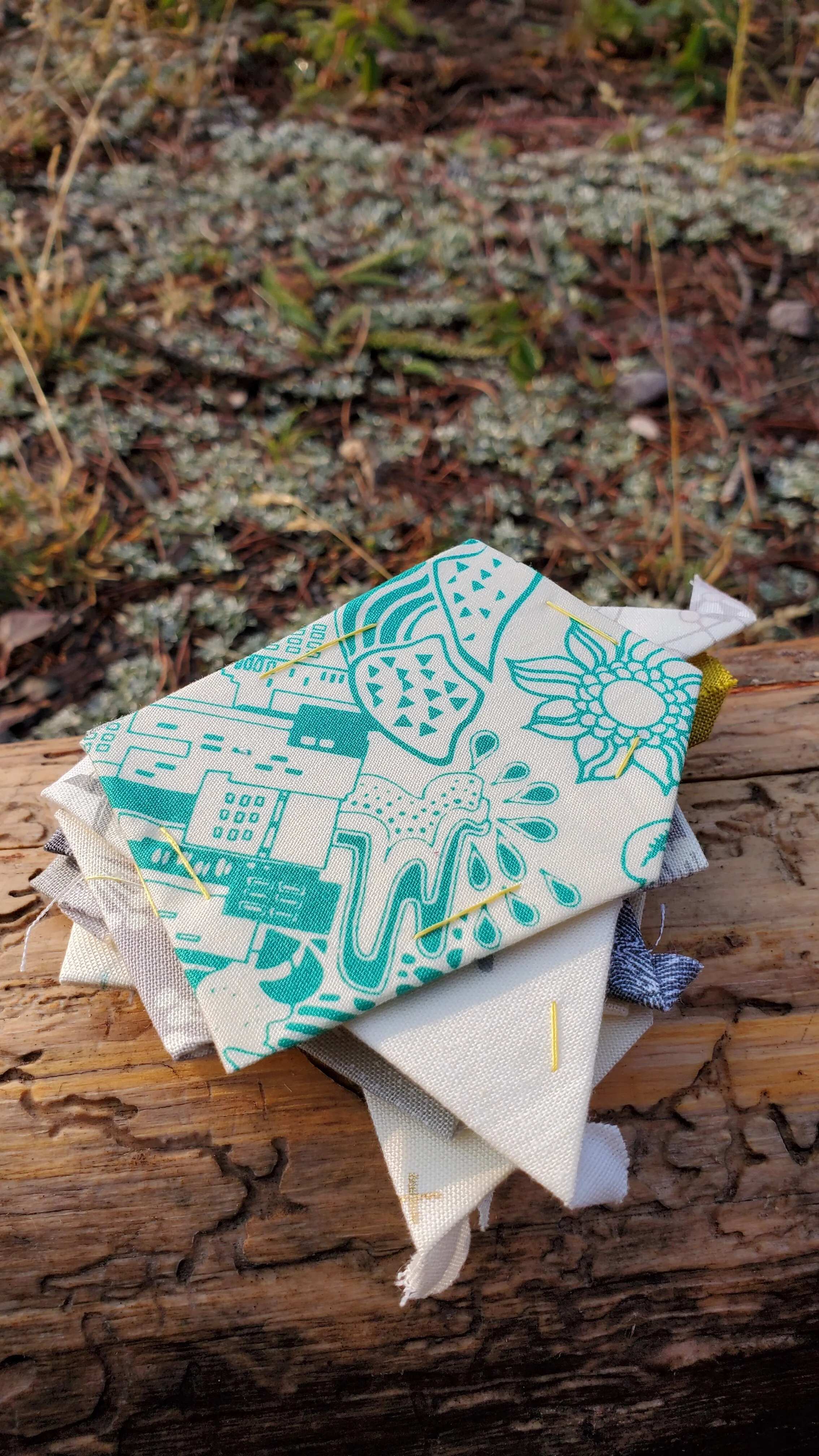At some point in the last few years I made one of these blobs. I was using it as a sample for an Improv Applique class I was teaching online. I probably made another one in another class. These were only ever intended to be samples.
Intentions and reality rarely meet in my quilting play.
Now that I have the studio and no machines at home my Morning Make is always handwork, when it comes to stitching. As I uncovered these blocks during the move they came to mind as one thing to play with as the morning grew cold and dark. It turns out they are a fun spot of joy! Now I keep making them.
This was my initial plan for layout: random. Just the four colours and laid out in no particular order. As soon as I decided to turn these blocks into a quilt this was my plan. I also wasn’t expecting to make a large quilt, only 5 x 5 blocks. As the background pieces are 10'“ squares, this would make a simple little baby quilt.
But then… but then I laid out the blocks by colour. It was actually only so I could ensure I wasn’t repeating the background fabrics in each colour way. Seeing them together was easier than thinking through that. And oh! Did that change everything!
This layout is amazing. It is so much stronger in showing off the blobs, giving them colour order. I still get randomness in the various fabrics, but the structure of columns is a much stronger design. There is no going back now.
What I do need to do, however, is add more columns. I’ve currently got 7 of each colour. If I add one more colour I now get a small lap quilt (47.5” x 66.5”). If I add 2 then I get a bigger lap quilt, especially if I make 8 blocks of each colour (57” x 76”). I could add 3 colours, stick with 7 blocks, and get a classic square (66.5” x 66.5”). I’m torn, to be honest. So, I will add 1 colour and see how I feel about it.
Who knows? I may change my mind completely again.







